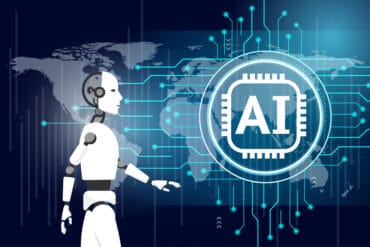
Those hesitant to fully automate should consider partial automation strategies that, while keeping a human involved, can still deliver significant benefits.
Spending on digital transformation hit an estimated $1.8 trillion this year, up almost 18% in just 12 months, according to the International Data Corporation (IDC). And this spending isn’t a fleeting trend. Experts forecast a 16% five-year compound annual growth rate for the digital transformation industry.
It’s clear that just about every modern business is attempting to build or shapeshift into a digital-first organization.
But many companies clambering to be the next digital leaders are missing a critical component of digital transformation: automation. In fact, Dell Technologies’ The State of Autonomous Operations report found only 15% of organizations identify themselves as adopters or leaders in automated processes. That’s a self-inflicted barrier to digital transformation.
After all, data is at the very core of digital transformation. It uncovers the insights that help companies create superior customer experiences, find innovative solutions, and design agile, efficient business models. Ultimately, data can carve out a company’s competitive advantage.
However, a substantial amount of this data will go unleveraged — and a substantial portion of these benefits will go unrealized — without automated processes. Automation can tackle the enormous amount of data society generates and tame its increasing complexity. And automation handles this with lightning speed and accuracy.
For example, the availability of digital apps and services is critical to digital transformation efforts, specifically delivering outstanding customer experiences. So, if a company’s website goes down, DevOps and SRE teams are under immense pressure to rapidly mitigate the problem. But, without the proper automation tool, the sheer volume of data, along with its growing complexity, make mitigation a painstakingly slow and subsequently costly process. Human teams need help from automation tools, in this case, artificial intelligence for IT Operations (AIOps). These solutions automatically monitor entire IT ecosystems, detecting disruptive incidents and determining their root cause, resulting in quicker fixes and happier customers.
This is just one of the many examples of how autonomous operations and AIOps technology are paying dividends. According to the aforementioned Dell Technologies report, 36% of organizations with high levels of automated operations project a revenue increase of 15% or more, while only 10% of those with low levels expect the same growth.
Knowing that just about every business wants to digitally transform and automation is a key — but often missing ingredient — to getting there, how can companies best fill their automation gaps?
See also: AIOps 2.0: Making Actionable Intelligence Actually Actionable
Navigate nervousness with partial automation
Enterprises experiencing push-back from internal departments (a key barrier to adoption per the Dell Technologies report) and are skittish about full automation can adopt a human-in-the-middle approach to automation, which is just as it sounds. IT teams can set up automated tools to collaborate with human teams, relying on their judgment and decision-making skills while reaping the benefits of automation and still advancing digital transformation. Here are four partial automation techniques:
Semi-supervised techniques
To build trust in the automated solution, IT leaders can employ semi-supervised techniques before unleashing the system’s full automated capabilities. For an AIOps tool, those baby steps may include machine learning (ML) capabilities that allow human teams to create unique clustering algorithms, thus collaborating with the technology to produce ideal outcomes.
Reward systems
Some automated platforms can be trained by humans, much like they’d train a dog. Just as the dog would learn positive behaviors with a treat, the system learns ideal decisions when teams tag the decision as “good.” Unlike dogs, machine learning models also respond well when humans indicate a negative outcome when they tag an outcome as “bad.” Through repetition and correction, both the dog and the automated system learn ideal outcomes that they should continue to replicate over time.
Measuring tech confidence
Similarly, the automated technology can invite a human to weigh in on its decision based on the tech’s confidence level. Once a system makes a decision, it analyzes the variables leading to that decision and lets the human operator know just how certain it is that the decision is correct. A low confidence level? The human will likely step in. A high confidence level? The automated system just might be authorized to go forth.
Transparency
In the tech industry, as in life, sometimes transparency is the key ingredient to trust. While IT teams have largely been in the dark about automated tools like AIOps, some vendors are becoming more transparent about their back-end models. As one Gartner analyst explained, “There are indicators of the so-called ‘black box’ opening up and end-users maturing to a point where they are ready to ask questions about what’s happening in the analytics layer, how the process is working, and how the outcomes can be better.”
All of these partial automation techniques can instill trust in the technology while advancing digital transformation strategies. Some may even move along to full automation and fully optimized digital transformation.
Quell investment fears with evolving automation technologies
Many business leaders are still rooted in the idea that manual processes are only worth automating if they require huge amounts of manual work. But, compared to legacy automated tools and operations, today’s automation is more flexible and adaptive to change. Even in modern, distributed architectures, automation is now a long-term investment with a more certain ROI.
Automation with natural language processing (NLP) capabilities, those abilities to understand text in a similar way as humans, is one-way automation tools have introduced new-found flexibility. For example, a bank operating a network of ATMs can use AIOps solutions to analyze huge quantities of data, uncovering valuable insights about the company’s assets. How is the system performing? Which ATMs are malfunctioning?
If the platform is NLP-enabled, the automated system will understand that the ATM located at “612 E. Capitol St. NE” is the same as “612 East Capitol Street Northeast.” These insights help teams rapidly find and resolve service-disrupting incidents while sidestepping issues associated with linguistic nuances.
Those hesitant to fully automate should consider partial automation strategies. They should also consider that rejecting all automated operations and AIOps technologies is rapidly becoming less of an option as competition in today’s digital era demands the data-driven insights that only automation can provide.





























